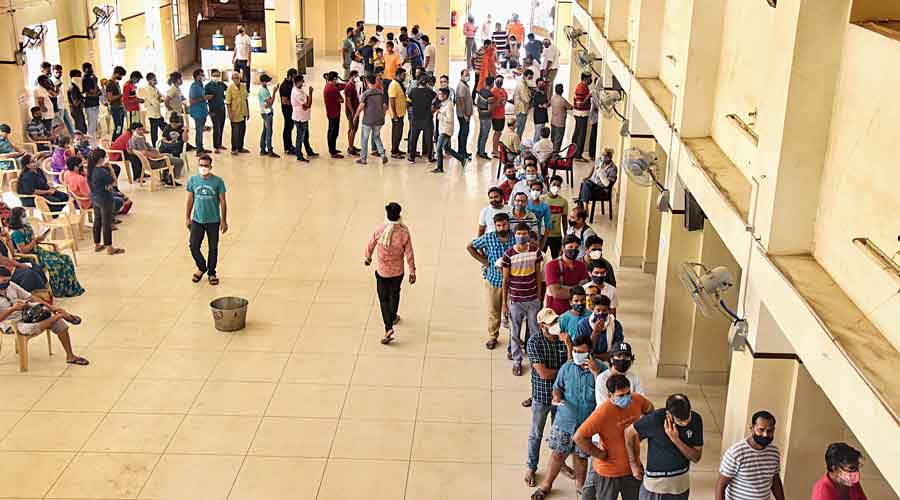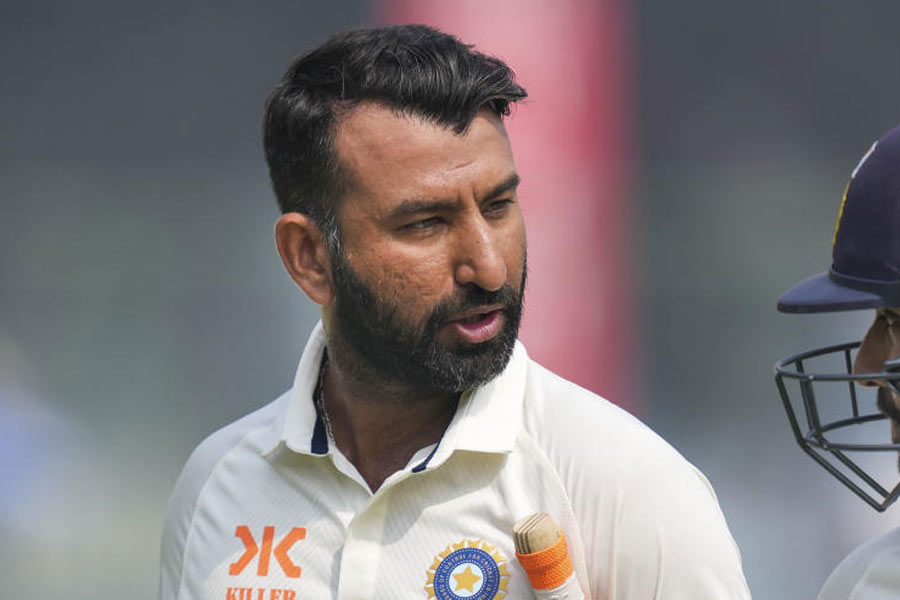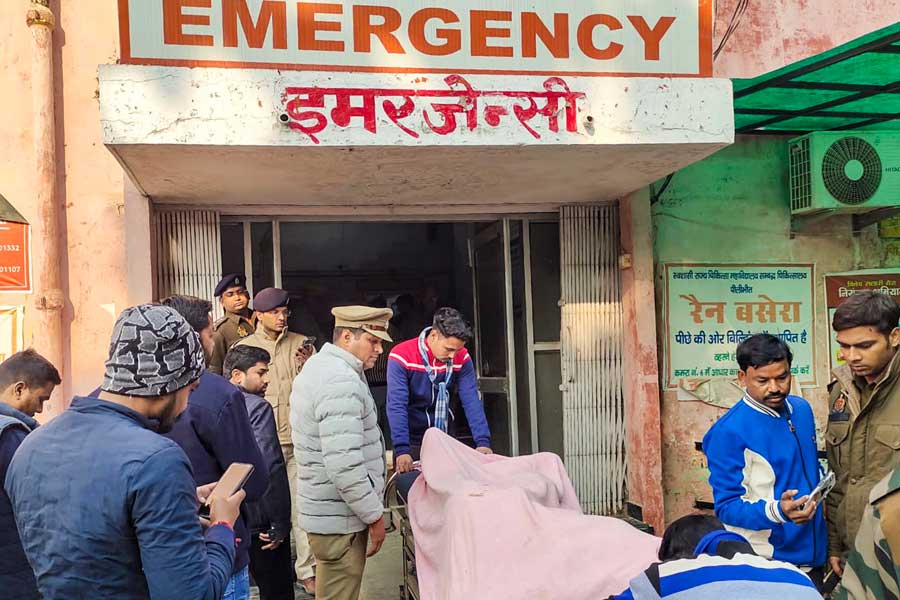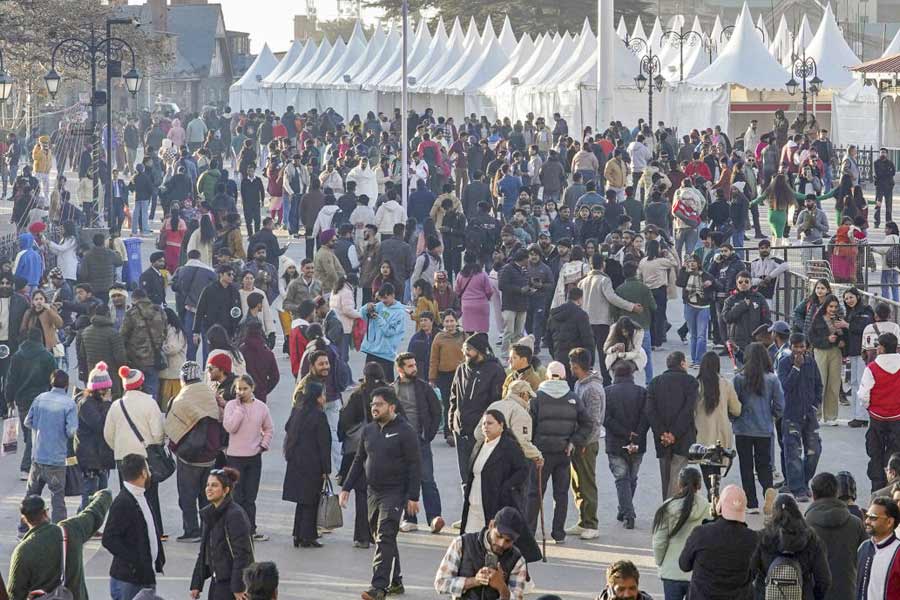India needs to administer more than 9.5 million doses of the Covid-vaccine daily to fully vaccinate its around 943 million adults by December 31. But limited supplies of doses have restricted the daily jabs to less than 5 million over the past month. Health officials have blamed production constraints.
But many experts believe India’s vaccination campaign is suffering from self-inflicted blows. One of them is R. Ramakumar, professor of developmental studies at the Tata Institute of Social Sciences, Mumbai. Ramakumar tells G.S. Mudur in this interview that India’s vaccination policy makers chased self-reliance without the critical investments required to achieve it and placed politics and spectacle ahead of science.
Q: You have for several weeks expressed doubts whether India will be able to vaccinate all its adults by December 31. Why?
RR: To vaccinate everybody above the age of 18 twice, India needs a total of about 1,900 million doses. We have completed a little more than 500 million doses. That would mean we would need nearly 1,400 million doses between August and December, administering over 9 million doses daily to meet the target. This looks impossible because we are currently at less than 5 million per day.
As we go ahead, we may also face vaccine hesitancy from some quarters and that could further slow things down. I’m unconvinced that we will be able to vaccinate all adults in India twice by the end of the year.
Q: Could things have been different? Could India have had access to more doses by now?
RR: Things could have been different if we had planned for vaccines and their production over the past year. In his Independence Day speech (last year), Prime Minister Narendra Modi had said we had two to three vaccines under testing in India and once they were approved, they would be produced. This was said in August 2020. We are now in August 2021. We still produce only two vaccines in India.
India could have revived its public-sector vaccine-producing units for mass production of Covaxin. We have seven public-sector vaccine-making units in India. But there is a history and it tells us how we drained the capacities of our public-sector units.
In 2008, we cancelled the production licences of vaccine labs in Guindy, Kunoor and Kausauli. We made no effort to revive them. We also have a vaccine complex in Tamil Nadu. The facility has been ready for production since 2016, but this too was never made use of for Covid-19 vaccines. We could have done a lot. We simply failed to make the necessary interventions to mass produce the vaccines in our country.
Q: Yes, the Prime Minister had announced a universal vaccination campaign in June 2020 and again in August 2020, but India didn’t actually order doses until January 2021. Do you see a disconnect between stated intent and actions?
RR: Look at what other countries did. They made huge down payments to vaccine companies to finance research and expand their production capacities. The Pfizer, AstraZeneca, BioNTech and Moderna vaccines have all received grants from governments.
Across the world, governments invested in companies over the past year to ensure doses were available when the vaccines were ready. India did not make any such investment, whether in private or public companies. It was only after the April shortages that India woke up and decided to provide some assistance to three public-sector units. This was an unpardonable error.
Q: What could India have done to avert the situation it is in today?
RR: India even today produces only two vaccines. No company other than the Serum Institute and Bharat Biotech delivers vaccines produced in India. This is a very narrow policy framework to follow in a pandemic. We did not diversify our vaccine basket from day one.
India gave permission to Covishield and Covaxin in January 2021. But in February 2021, when Sputnik V came for approval, India refused approval, citing lack of immunogenicity data. Strangely, Covishield had been approved a month earlier based on data from other countries such as the UK and Brazil.
Similarly, Pfizer withdrew its application after the government insisted that a local clinical trial would be necessary. But when Covaxin was approved in January, its phase 3 protective efficacy data was not available. Why were the same yardsticks not applied to Sputnik or Pfizer?
It is perplexing. Science was subordinated to politics. And the short-term gains of showcasing spectacles were given more importance.
Q: Many countries secured doses between July and December 2020 through advance purchase pacts and investments in at-risk production by vaccine makers. But India appeared to focus at the time on “made in India” vaccines. Is the campaign currently suffering because of the focus on self-reliance or atma-nirbhar?
RR: India’s decisions on the vaccine front were made initially on assumptions that made-in-India vaccines will be adequate to vaccinate its own population and to supply vaccines to other countries. This was a highly erroneous assumption as we realise to our great peril today.
Most countries placed advanced purchase orders last year. Even Bangladesh placed an advanced order with the Serum Institute in November 2020. India placed its first order only in January. India did not make sure that advanced purchase orders were placed in time. This was a major mistake.










